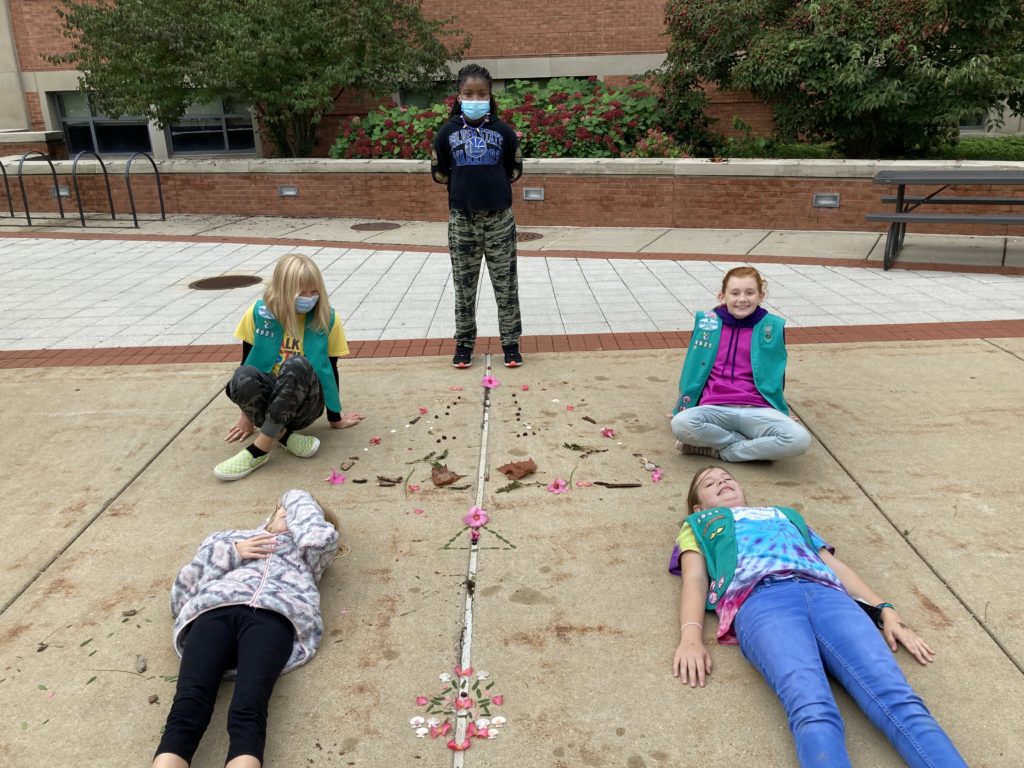
Which came first, the chicken or the egg? Okay, that’s an old riddle perplexing minds for ages, but here’s a better one: Which came first, math or nature? Nature, of course! Math was invented to help us describe all the amazing patterns, quantities, and complex features we find in nature. Elementary students got to explore ways math and nature work together at ExploreHope’s Environmental Stewardship Day.
1st-5th grade students from all over West Michigan came together on Saturday, October 10th to learn about Fibonacci and symmetry, plus many more patterns, all as it relates to nature. Did you know a fish’s scales demonstrate tessellation – a patterns created by repeating one shape over and over again? 1st-3rd graders got to create their own tessellated fish with shape stamps and a huge fish outline!
Not only does math let us describe our environment, it helps us understand it. Kids conducted their own water tests on local water samples, evaluating the water for fertilizer pollution, clarity, and available oxygen for animals. After collecting their data, kids used another form of math – graphing – to easily compare their results.
Since nature is all around us, math is all around us too! You can STEM@Home, just like we did at Hope. Grab a notebook and pencil and head to your favorite nature spot to get started. It could be your neighborhood park, a creek near your house, or even your own backyard!
Sketch a quick tally chart on your paper, and start quietly observing your surroundings. Every time you see a different kind of animal, make a tally on your chart! Maybe you’re counting birds, bugs, and squirrels. Maybe you’re at a swamp and observing fish, frogs, and insects. Wherever you are, take 15-20 minutes to collect your data – and enjoy the most peaceful math class ever!
Once you’ve collected your data, decide how you’ll display it. Will you make a bar graph? A pie chart? How about changing your tallies into numerals so it’s easy to see your results? All of those ways are using math to describe nature. You’re on the way to being a nature mathematician!